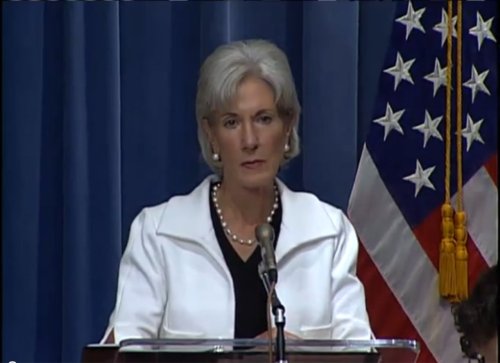HHS awards contracts to develop new flu vaccine technology …
HHS awards contracts to develop new flu vaccine technology
Two contracts support advanced development of next-generation recombinant vaccine
The U.S. Department of Health and Human Services (HHS) awarded two contracts today to help make vaccine available more quickly for seasonal flu outbreaks and pandemics. The contracts for advanced development of new types of vaccine and new ways to make flu vaccine known as next-generation recombinant influenza vaccine total $215 million.
“The 2009 H1N1 pandemic demonstrated the need for technologies that can provide vaccines more rapidly,” HHS Secretary Kathleen Sebelius said. “These next-generation flu vaccines hold the potential to be even more effective and to make the first and last doses of vaccine available sooner than existing flu vaccines by weeks and months which can save more lives during a pandemic as well as during seasonal flu outbreaks.”
HHS awarded one contract to Novavax, Inc., of Rockville, Md., for $97 million over the first three years, which can be extended for an additional two years, for a total contract value of $179.1 million. HHS awarded a separate contract to VaxInnate, Inc. of Cranbury, N.J., for $117.9 million over the first three years, which can be extended for two additional years, for a total contract value of $196.6 million.
Under its contract, Novavax is to develop new technology to produce vaccines using insect cells to express influenza proteins and create virus-like particles that stimulate a strong immune response in humans.
VaxInnate is developing a recombinant influenza vaccine technology based on combining influenza and bacteria proteins to stimulate strong immune response to protect against the flu.
Through these contracts, both companies will conduct clinical safety and efficacy studies and optimize and validate their manufacturing processes, which are needed to obtain licensing from FDA in order to use the new technologies in manufacturing flu vaccine in the United States.
These next-generation recombinant influenza vaccines were supported in early stages by the National Institutes of Health and will complement currently available and other new influenza vaccines. Today’s contracts for advanced development are supported by the HHS Biomedical Advanced Research and Development Authority (BARDA) within the Office of the Assistant Secretary for Preparedness and Response.
The contracts are part of a national pandemic vaccine preparedness strategy, which includes the advanced development of new types influenza vaccines as well as expanding and diversifying domestic influenza vaccine production, and establishing and testing stockpiles of pre-pandemic vaccine. In addition, the recombinant flu vaccine may enhance pandemic vaccine manufacturing surge capacity in the United States.

On Aug. 19, HHS Secretary Kathleen Sebelius released an examination of the federal government’s system to produce medical countermeasures, along with recommendations for a better approach.
The contracts use the federal government’s new approach to producing medical countermeasures – the medications, vaccines, medical equipment and supplies needed for a health emergency. On Aug. 19, HHS Secretary Kathleen Sebelius released an examination of the federal government’s system to produce medical countermeasures, along with recommendations for a better approach. The recommendations included developing flexible, robust, nimble and innovate technologies to increase capacity and produce vaccines for pandemic influenza and other threats in a much shorter timeframe. These recommendations were consistent with a report by the President’s Council of Advisors on Science and Technology, titled “Report to the President on Reengineering the Influenza Production Enterprise to Meet the Challenges of Pandemic Influenza.” Both reports are available at www.phe.gov/preparedness/mcm/enterprisereview/Pages/default.aspx
BARDA provides a comprehensive, integrated, portfolio approach to the advanced research and development, innovation, acquisition, and manufacturing infrastructure for vaccines, drugs, therapeutics, diagnostic tools, and non-pharmaceutical products for public health emergency threats. These threats include chemical, biological, radiological, and nuclear threats, pandemic influenza, and emerging infectious diseases. For more information, visit www.phe.gov
* The above story is reprinted from materials provided by USA Department of Health and Human Services (HHS)
** More information at USA Department of Health and Human Services (HHS)




















